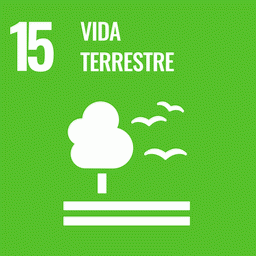Fire at the dry southern margin of the Amazon rainforest could have major consequences for regional soil carbon (C) storage and ecosystem carbon dioxide (CO2) emissions, but relatively little information exists about impacts of fire on soil C cycling within this sensitive ecotone. We measured CO2 effluxes from different soil components (ground surface litter, roots, mycorrhizae, soil organic matter) at a large-scale burn experiment designed to simulate a severe but realistic potential future scenario for the region (Fire plot) in Mato Grosso, Brazil, over 1 year, and compared these measurements to replicated data from a nearby, unmodified Control plot. After four burns over 5 years, soil CO2 efflux (Rs) was ~5.5 t C ha−1 year−1 lower on the Fire plot compared to the Control. Most of the Fire plot Rs reduction was specifically due to lower ground surface litter and root respiration. Mycorrhizal respiratio
n on both plots was around ~20% of Rs. Soil surface temperature appeared to be more important than moisture as a driver of seasonal patterns in Rs at the site. Regular fire events decreased the seasonality of Rs at the study site, due to apparent differences in environmental sensitivities among biotic and abiotic soil components. These findings may contribute toward improved predictions of the amount and temporal pattern of C emissions across the large areas of tropical forest facing increasing fire disturbances associated with climate change and human activities.
Leafcutter Ant Nests Inhibit Low-Intensity Fire Spread in the Understory of Transitional Forests at the Amazon's Forest-Savanna Boundary
Leaf-cutter ants (Atta spp.) remove leaf litter and woody debris—potential fuels—in and around their nests and foraging trails. We conducted single and three annual experimental fires to determine the effects of this leaf-cutter ant activity on the behavior of...
